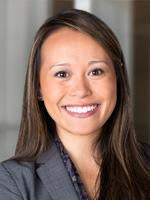On April 1, 2020, the United States Department of Labor (DOL) issued a Final Rule implementing the Families First Coronavirus Response Act (FFCRA). Shortly thereafter, the State of New York filed suit against the DOL, arguing that several features of the Final Rule exceeded the DOL’s authority under the FFCRA.
Yesterday, the United States District Court for the Southern District of New York granted partial summary judgment in favor of the State of New York and “vacated” four aspects of the Final Rule. Specifically: (1) the “work-availability requirement”; (2) the definition of “health care provider” for purposes of the “health care provider or emergency responder” exemption; (3) the requirement that an employer consent in order for an employee to take intermittent leave under the FFCRA; and (4) the requirement that an employee submit documentation to their employer as a pre-condition to leave. The Court’s ruling could have a significant impact on how FFCRA leave is administered in New York, and potentially across the Country if other states follow in New York’s footsteps.
First, without the “work-availability requirement,” an employee is entitled to paid FFCRA leave even if an employer is temporarily closed or they are placed on furlough because the employer does not have work. The Court analogized a furloughed employee to a teacher on paid parental leave who would still be considered to be on “leave” even if school is called off for a snow day. Although the Court invalidated the requirement, on this issue the Court acknowledged that the statutory language on this point was ambiguous, and that the DOL has the authority to issue guidance on the matter. Further, while the Court held that the DOL’s “barebones explanation for the work-availability requirement is patently deficient,” it did not find that the conclusion was inconsistent with the statute. As a result, even leaving aside the possibility of a different outcome on appeal, the DOL may be able to address the Court’s concern through a more thoroughly reasoned explanation of its interpretation.
Second, the Court’s Order dramatically narrows the scope of the “health care provider or emergency responder” exemption, which allows an employer of an employee who is a health care provider or emergency responder to exclude the employee from taking leave under the FFCRA. The DOL’s Final Rule defined a “health care provider” much more broadly than the statute as:
anyone employed at any doctor’s office, hospital, health care center, clinic, post-secondary educational institution offering health care instruction medical school, local health department or agency, nursing facility, retirement facility, nursing home, home health care provider, any facility that performs laboratory or medical testing, pharmacy, or any similar institution, Employer, or entity. This includes any permanent or temporary institution, facility, location, or site where medical services are provided that are similar to such institutions.
The DOL’s broad definition provided many health care related employers the option to apply the exemption to virtually all of their employees. By vacating the Final Rule’s definition of “health care provider,” the only positions clearly included within the definition are those identified in the Family and Medical Leave Act’s (FMLA) definition of “health care provider,” which is limited to “a doctor of medicine or osteopathy who is authorized to practice medicine or surgery (as appropriate)” or “any other person determined by the Secretary to be capable of providing health care services.” (A listing of those other persons is available here). In rejecting the DOL’s definition, the Court acknowledged that the DOL, though the Secretary of Labor, has authority to expand the definition of the term beyond what is set forth in the statute. However, it required that there be “at least a minimally role-specific determination” with respect to the application of the exemption. As a result, even absent an effective appeal, the DOL could take steps to refine this definition, in which case it will be more likely to receive deference from a reviewing court.
The Final Rule permits employees to take FFCRA leave intermittently only if the employer and employee agree, and even then, only for a subset of qualifying reasons where there is a minimal risk that the employee will spread COVID-19 to other employees. On this point, the Court agreed with the limitation on the reasons for which employees may take intermittent leave but vacated the requirement that an employer must consent to intermittent leave. Accordingly, the ruling would not require employers to grant intermittent leave when there is a risk of spreading COVID-19 to other employees. However, this decision indicates that employers who do not currently permit intermittent leave under circumstances where there is not a risk of spreading COVID-19 may be at risk if they do not do so going forward.
Finally, the Court found that the requirement that an employee submit documentation concerning the need for leave as a condition precedent to taking FFCRA leave was inconsistent with the notice provisions contained in the FFCRA.
At this point, it is unclear whether the DOL will move to stay the order pending appeal to the Second Circuit. What is clear, unfortunately, is that employers are once again faced with uncertainty as they evaluate whether and how to apply the FFCRA. The Court’s opinion does not apply beyond New York, and it does not mean that the problems with the DOL’s Final Rule cannot be remedied, but employers should take notice and consult with counsel to determine the proper path forward for their organization.







 />i
/>i

